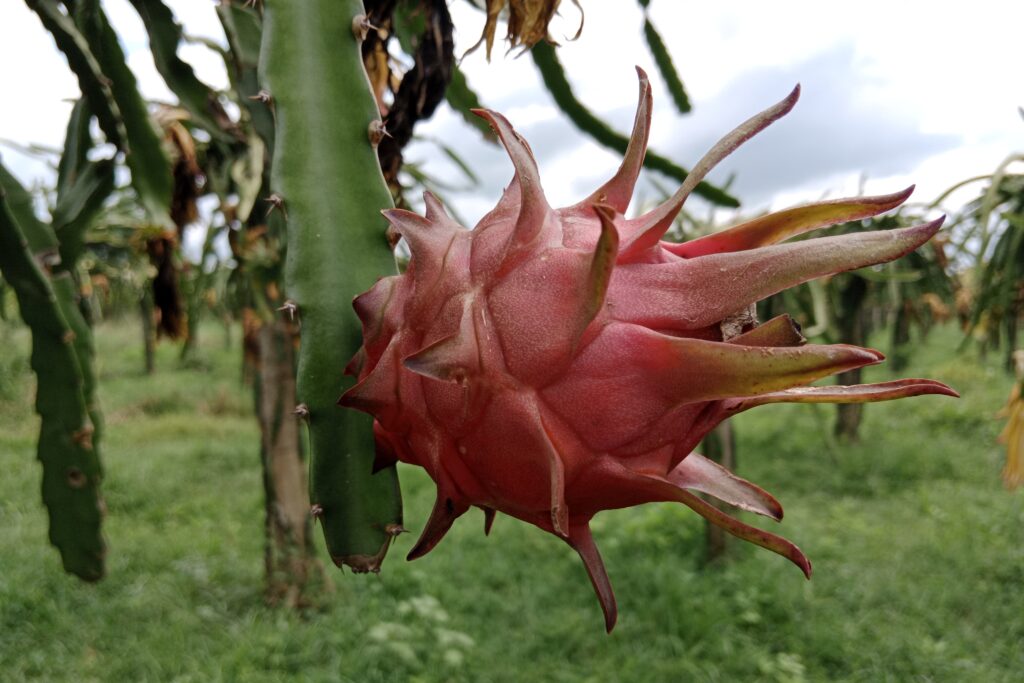The content provided explains various transportation mechanism across biomembrane, which are crucial for the movement of molecules, ions, and water in cells. Here’s a detailed breakdown of each concept:
Transport of Water and Molecules through Biomembranes
This section explains how water and molecules move across cellular membranes, driven by different forces such as concentration gradients, membrane permeability, and specialized transport proteins. Here’s a detailed breakdown:
Rate of Transport (Flow)
Formula: F=Dn / t
F : Rate of transport or flow (measured in moles per second, mol/s).
Dn : Number of transported molecules (measured in moles, mol).
T : Time (measured in seconds, s).
Explanation
- This formula quantifies how much of a substance (e.g., water, ions, or molecules) passes through a membrane over a given period.
- For example, the movement of ions like sodium or potassium through ion channels can be expressed using this equation
Flux
Formula: J=F / A
J : Flux, or the rate of transport per unit membrane area (measured in moles per square meter per second, mol/m²/s).
F : Flow (mol/s), derived from the earlier formula.
A : Membrane area (measured in square meters, m²).
Explanation
- Flux describes the efficiency of transport relative to the size of the membrane.
- For instance, a higher flux indicates that more molecules are being transported across each unit area of the membrane.
Fick’s Diffusion Law
Formula: F=P⋅A⋅Dc or F=J⋅A
F: Flow (mol/s).
P: Permeance (measured in meters per second, m/s), which indicates how easily a membrane allows substances to pass.
A: Membrane area (m²).
Dc: Concentration gradient (mol/m³), representing the difference in concentration of the transported molecule on the two sides of the membrane.
Explanation
- This law explains passive diffusion, where substances move from areas of high concentration to areas of low concentration, driven by the gradient.
- The rate of diffusion depends on:
- Permeance: Higher permeability allows faster diffusion.
- Membrane area: Larger areas allow more molecules to cross.
- Concentration gradient: A steeper gradient increases the driving force for diffusion.
- For example, oxygen diffuses across membranes in cells based on its concentration difference between the inside and outside of the cell.
Aquaporins
Definition
Aquaporins are integral membrane proteins that form water channels in the biomembrane.
They selectively allow water molecules to pass while blocking ions and other solutes.
Function
Facilitate the rapid movement of water molecules across membranes, crucial for processes like osmosis.
Help regulate cellular water balance by controlling water uptake and release in response to osmotic pressure differences.
Examples of Importance
In plant cells, aquaporins help maintain turgor pressure, allowing the plant to remain upright.
Transport Processes Balancing the Membrane Potential
Maintaining the membrane potential, or the voltage difference across the cell membrane, is crucial for many cellular processes such as signal transmission, nutrient uptake, and maintaining ion homeostasis. The balance of ions and other charged molecules across the membranes achieves this potential through both active and passive transport processes.
The transport of ions and molecules across membranes is fundamental to maintaining the membrane potential. Processes like passive ion diffusion, active pumping, and the selective action of ion channels are tightly regulated. The patch clamp technique has been indispensable in unraveling the mechanisms of ion transport and the contributions of individual channels, significantly advancing our understanding of cellular electrophysiology and membrane potential regulation.
Key Concepts in Membrane Potential Maintenance
A). What is Membrane Potential?
- The membrane potential is the voltage difference between the inside and outside of a cell, resulting from unequal distribution of ions (e.g., Na⁺, K⁺, Cl⁻, and Ca²⁺) across the plasma membrane.
B). Ion Transport Across the Membrane
Passive Transport
Ions move down their electrochemical gradient through channels, such as potassium (K⁺) or sodium (Na⁺) channels. This process does not require energy.
Example: Potassium leak channels allow K⁺ to move out of the cell, contributing to the negative charge inside the membrane.
Active Transport
Ions are pumped against their concentration gradients using energy from ATP hydrolysis.
Example: The Na⁺/K⁺ pump actively transports 3 Na⁺ ions out and 2 K⁺ ions into the cell per ATP molecule, maintaining the resting potential.
C). Electrogenic Pumps:
Proton Pumps (H⁺ ATPases)
Found in plant cells, these pumps actively expel H⁺ ions, creating a proton gradient and contributing to the membrane’s electrical gradient.
Na⁺/K⁺ ATPase (Sodium-Potassium Pump)
Found in animal cells, it generates a net negative charge inside the cell, essential for establishing and maintaining the resting potential.
D). Ion Channels
Voltage-gated, ligand-gated, or mechanically gated ion channels allow ions to flow based on the cell’s needs. These channels are tightly regulated and contribute to dynamic changes in the membrane potential.
Patch Clamp Technique
The patch clamp technique is a laboratory method used to study ionic currents through individual membrane ion channels. It provides valuable insights into how specific channels contribute to membrane potential and cellular function.
Overview of the Technique
- A glass micropipette, filled with an electrolyte solution, is attached to the cell membrane to isolate and measure the activity of a single ion channel or a group of channels.
- Using electrodes, researchers can record the current that flows when ions move through the channel.
Applications
Study of Ion Channels
Determines how ion channels open and close in response to voltage or other stimuli (e.g., ligands, mechanical stress).
Quantification of Ion Flow
Measures the current carried by ions, which contributes to changes in membrane potential.
Pharmacological Testing
Helps in testing drugs that target ion channels, such as calcium channel blockers used for hypertension.
Types of Configurations
Cell-attached mode
- A small patch of the membrane is isolated while still attached to the cell.
Whole-cell mode
- The micropipette ruptures the membrane patch, allowing the study of ionic currents across the entire cell.
Inside-out mode
- The membrane patch is pulled away from the cell, exposing the intracellular side of the channel.
Outside-out mode
- The pipette pulls a patch of the membrane that reseals, exposing the extracellular side of the channel.
Importance in Membrane Potential Studies
The patch clamp technique has enabled scientists to study:
- The role of voltage-gated channels in nerve impulse generation.
- The impact of ion channel mutations on diseases like epilepsy or cystic fibrosis.
- The behavior of proton pumps and electrogenic transporters in maintaining cellular homeostasis.
Significance of Balancing Membrane Potential
Cellular Communication
Membrane potential changes are the basis of electrical signals in excitable cells like neurons and muscle cells.
Homeostasis
Balancing ion transport ensures the cell maintains proper pH, osmotic balance, and nutrient concentrations.
Energy Storage
The membrane potential acts as a form of stored energy, used by processes like ATP synthesis in mitochondria (via proton gradients) or secondary active transport.
Disease Implications
Dysregulation of membrane potential and ion transport contributes to conditions like cardiac arrhythmia, hypertension, and neurological disorders.
Transport Through Biomembranes
Symporters
Symporters are a type of membrane protein involved in active transport, enabling the simultaneous movement of two substances across the membrane in the same direction. These proteins harness energy by coupling the transport of one molecule, which moves along its electrochemical gradient (favorable movement), with the movement of another molecule, often against its concentration gradient (unfavorable movement).
Key Features of Symporters
Dual Transport Mechanism
- Symporters move two molecules or ions in the same direction across the membrane.
- One substance is transported down its electrochemical gradient, providing the energy required to transport the other substance against its gradient.
Energy Source
- Symporters are powered indirectly by energy from ion gradients established by primary active transporters such as ATPases.
- Example: The sodium-potassium pump creates a gradient for Na⁺, which symporters can utilize.
Types of Molecules Transported
- Small ions (e.g., Na⁺, H⁺)
- Sugars (e.g., glucose, lactose)
- Amino acids
- Other nutrients or signaling molecules
Selective Binding
- Symporters have specific binding sites for both substances, ensuring selective transport.
Proton Pumps
Proton pumps are enzymes that use energy to transport protons (H⁺) across membranes, playing a role in pH regulation, membrane potential, and ATP synthesis.
P-type ATPases
- Use ATP to pump protons or Ca²⁺ across the plasma membrane.
- ATP phosphorylates the transporter during the pumping process.
V-type ATPases
- Pump protons into the tonoplast (vacuolar membrane) or other endomembranes (e.g., ER, Golgi, vesicles).
- ATP hydrolysis drives this process.
F-type ATPases
- Operate in reverse compared to P- and V-type pumps.
- Use a proton gradient to synthesize ATP (e.g., in mitochondria during oxidative phosphorylation).
ABC Transporters
ABC (ATP Binding Cassette) Transporters
- Transport a wide range of complex substances, including secondary metabolites, xenobiotics, and breakdown products.
- Consist of ATP-binding domains (Walker motifs).
- Used in processes like detoxification and sequestration of substances in the vacuole.
Protein Transport Through Biomembranes
Chaperones
Proteins that assist in the proper folding of other proteins and prevent incorrect interactions during polypeptide synthesis.
Transport Through Nuclear Pores
Pores in the nuclear envelope allow the selective movement of macromolecules such as:
- Histones
- RNA polymerase
- Regulatory proteins
- RNA-binding proteins
- Pathogenic DNA or viruses (in some cases)
Endomembrane System
The endomembrane system facilitates intracellular transport and includes the following:
Endoplasmic Reticulum (ER)
- Synthesizes proteins and lipids.
- Serves as the starting point for vesicle formation.
Vesicular Trafficking
- Movement of vesicles (membrane-bound sacs) between cellular compartments such as the Golgi apparatus, ER, lysosomes, and plasma membrane.
- Ensures proper delivery of proteins and lipids.
Alternative Secretion Pathway
- A direct pathway where vesicles bypass the ER and Golgi apparatus to reach the cell wall.
- Its function remains unclear but may serve specific or stress-related processes.
Fianlly, these mechanisms highlight the complexity of transport processes in cells, which involve both passive and active movement of molecules through biomembranes. They play essential roles in cellular homeostasis, energy production, and the regulation of various physiological functions.


